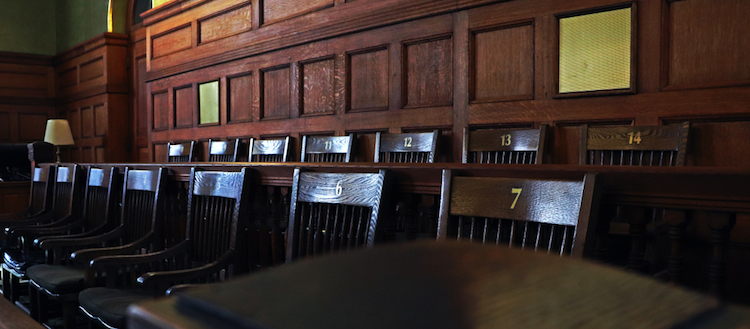Texas clerk's 'idiosyncratic system' of choosing jury panels could lead to thousands of overturned verdicts

Image from Shutterstock.
A district clerk in Brazoria County, Texas, divided up potential jurors by region and race to assemble jury venires, an “idiosyncratic system” that could potentially lead to thousands of over overturned verdicts, according to Texas Monthly.
Texas law says potential jurors are supposed to be selected at random from the pool of people called to jury duty. But former Brazoria County district clerk Rhonda Barchak “divided up jurors by geographical region, and then by race, to assemble panels for criminal, civil and family law trials,” Texas Monthly reports.
Barchak, a Republican, was district clerk since 2010. She resigned in August as Brazoria County District Attorney Tom Selleck asked the Texas Rangers’ Public Integrity Unit to investigate.
Barchak’s lawyer, Chip Lewis, told Texas Monthly that Barchak’s intent was to assemble a “representative cross section” of the county’s population. He explained how it worked.
County residents are summoned to jury duty based on an electronic list provided by the Texas secretary of state. Most county clerks divide up the potential jurors for trial venires by drawing juror cards from a stack or by using technology to make a random selection.
Barchak instead sorted juror cards into two piles. One was for residents of Pearland, the county’s largest city. The other was for residents outside Pearland. Then the two geographical piles were divided into white and nonwhite jurors, leading to four stacks of cards. Those stacks were used to assemble jury venires for the week’s trials, although the process used at that point is unclear.
“But if she was aiming for a venire that reflected the county’s population,” Texas Monthly wrote, “she had a problem: Brazoria County’s population has become more diverse, changing from 51% nonwhite to 59% nonwhite in the years since 2015. A venire evenly divided between white and nonwhite residents would have meant underrepresentation of people of color on juries.”
Lewis said Barchak’s method, as opposed to a random shuffle, ensured greater minority representation on juries.
“Just taking the cards and shuffling them—maybe they shuffled well, and maybe they didn’t,” he said.
Lewis also said Barchak’s methods were known to “multiple judges, prosecutors, defense attorneys and dozens of other county employees,” and no one complained.
KTRK and Click2Houston.com also have coverage.
Hat tip to @ProfFerguson.



